We’ve enjoyed some bracing walks on Dublin Bay haven’t we – and have covered a fair distance in doing so! But Dun Laoghaire is different – it must be embraced at a different pace. As we ‘promenade’ the sea front and stroll the piers, you’ll find yourself pulled into the past – imagining yourself in your Victorian finery – enjoying the healthy sea air…(well … all right – you can wear your runners – and I will probably have to hurry you along if we are to see everything!… but you get the picture!!).
Looking down from nearby Killiney Hill, you can see the 2 great stone arms reaching into the bay.

We’re going to walk them ( yes- both… stop moaning) and see what else the area has to offer but its all very manageable and makes for a gorgeous day out.
(Before we set off, a word about the photos – I’m using a compilation so the overall effect may appear disjointed – blue skies mixed with grey and so on ….)
How it all began…….
Dunleary took its name from a fort – Dún – built by High King Laoghaire in the mid 400’s. No trace of that fort remains.
Up until the mid 1700’s, there was little here apart from a small harbour and a few fishermen’s cottages.
Meanwhile, there were major problems in the developing Dublin port. It was difficult to access due to a frequency of high winds and a sand bar that ran across the mouth of the River Liffey. There was nowhere in Dublin Bay capable of sheltering ships during major storms and hundreds were wrecked in the bay down through the centuries.
Some passenger boats began using Dunleary harbour to avoid Dublin port. Coal boats began trading from here with ports in England.
To facilitate this new trade, a pier was built in the 1760’s.
In November 1807, two ships – the Rochdale and HMS Prince of Wales – set sail from Dublin. A storm forced them onto the rocks close to Dunleary. Almost 400 people – mostly soldiers and their families – lost their lives.
Pressure was put on to provide an area of water that would afford shelter for ships caught in a storm.
This new harbour at DunLeary was to be just for asylum purposes and never intended to act in any way as an actual port. It had no connection as such with the older harbour.
This was to be a massive project – the walls needed to be long, high and strong to contend with the exposure and weather in the bay.
The first stone was laid on May 31st, 1817 and the piers were completed in the 1840’s.
Wagons of stone were brought along the tramway from nearby Dalkey quarry and deposited in the sea. The action of waves during storms helped to settle the stones down onto the sea bed.
When King George IV came to visit the new port under construction in 1821, the name Dunleary was dropped in favour of Kingstown in his honour.
We’re going to start with the West Pier and work our way back. This is quite different from the busy East Pier – less manicured and tended to but has fewer daytrippers and is probably more popular with the locals….
We’re standing roughly where the original hamlet of Dunleary was located. Much of that original harbour is covered by the railway line running behind us.

There is SO much activity here… there’s always something to look at…
This pier might be considered a bit more ‘rustic’ than the other… that’s why I brought you here first!
A peep over the wall reveals a bit more of the bay. That’s Seapoint – another great bathing spot – and yet another round tower.
A lone swimmer against the backdrop of the Chimneys….

The incoming trawler serves as a poignant reminder of Dun Laoghaire’s fishing heritage. Up to the 1980’s there was a significant fleet based here – sustaining over 100 jobs and landing the fourth largest catch in Ireland. Most of the trade was lost when Howth was designated a Fishery Harbour Centre.

Inside the harbour, the sailing schools are busy…..
….outside, the big wigs are enjoying the sun and the breeze…

You might recognise some landmarks from previous walks…..
Howth Head…..

…..Poolbeg Lighthouse….
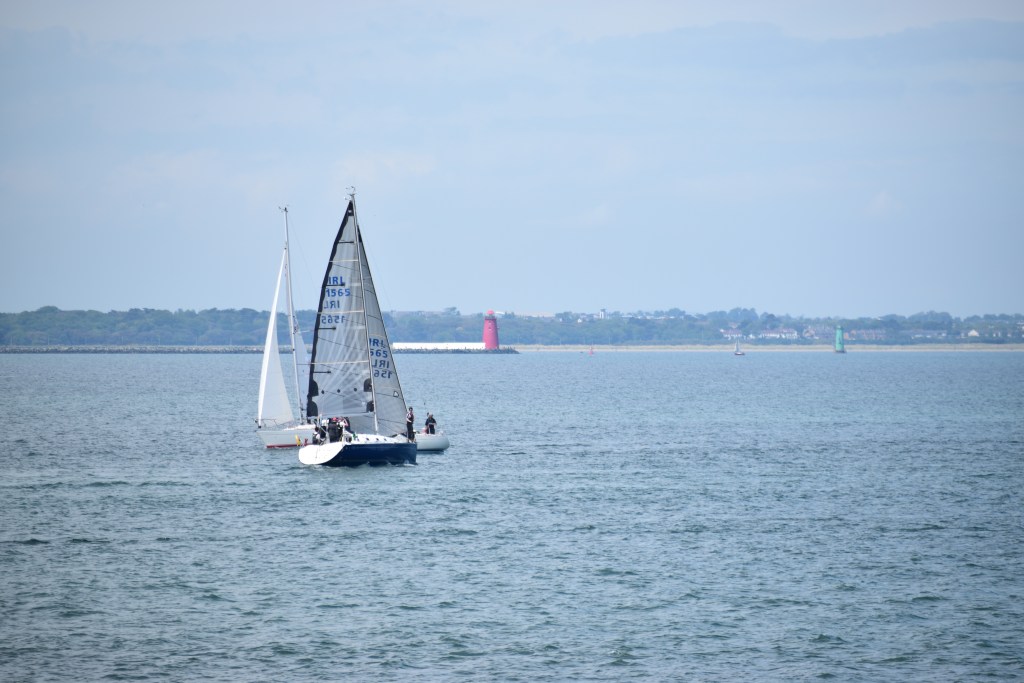
….Baily Lighthouse.

The ends of the two piers look so close to each other…

Although now that we’ve reached the end, they’re not so close after all. I’ve always thought it would make for a brilliant walk if there was a pedestrian tunnel linking the piers … but then I just like looped trails!

In the hundreds of times I’ve reached the end of this pier, there’s always been someone fishing – and I don’t think I ever once saw anyone catch a fish!!!!

But there’s other wildlife to make up for it….
Turning back towards the shore, you’ve a great view of the skyline…..
….We’ll be heading up towards those spires shortly…..
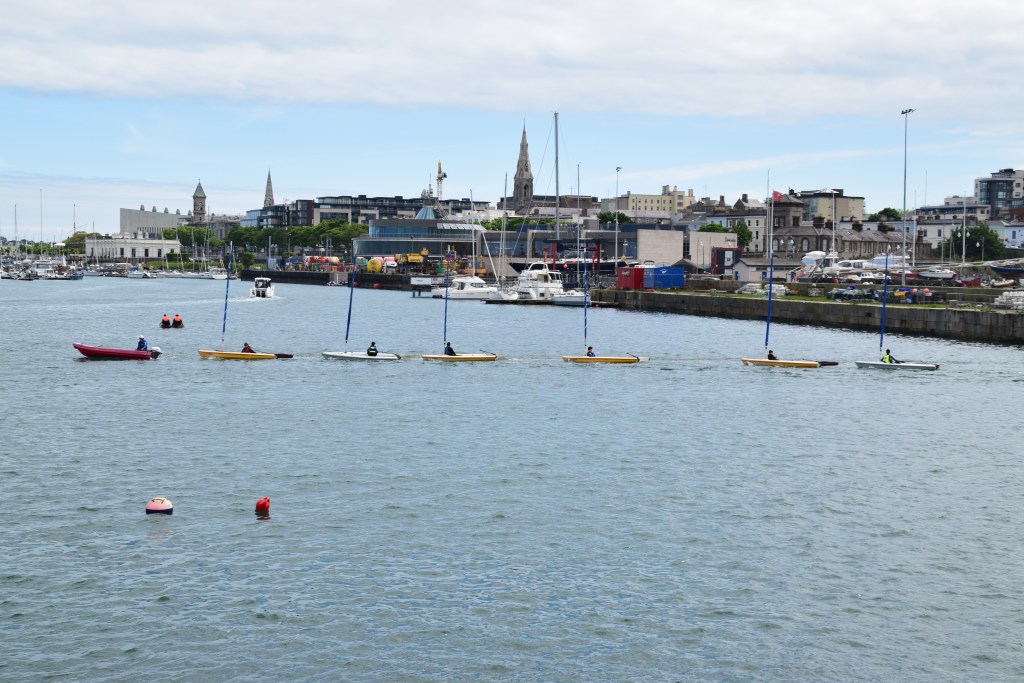
….Imagine the view!!!…..and the price!!!

….The maritime heritage of the area is reflected in many local developments.

Back at the top of the pier, the surrounding hive of buildings and businesses will leave you in no doubt as to the scale of activity and industry connected to the water.
As we leave the West Pier, we pass a row of coastguards’ cottages which date from the mid 1800’s…
A quick glance up the road reveals the new cycle lane that goes along the seafront. Its driving car owners insane but I like the wavy railing at least!
The Commissioners of Irish Lights oversee coastal lights and navigational aids around Ireland. I like the lighthouse design of their HQ.

The Marina is a newcomer, in existence since just 2001. It has capacity for 820 boats.


Hobblers operated in the bay up until the 1930’s. They often passed the time fishing in their 26 foot wooden skiffs until they spotted an incoming ship. There was fierce competition to be the first to throw a hook onto the ship’s deck, thereby earning a piloting fee and maybe a bit more for unloading the cargo. Out in all weathers, it was a hazardous existence for very little money and many paid with their lives.
This bronze monument is dedicated to Dublin’s Hobblers. The 64 lifejackets are a reminder of the hazards associated with the sea while the tower shape represents a lighthouse as a symbol of hope and survival.

Looking inland, we can see one of the town’s 4 Yacht Clubs. This would be Irelands largest sailing base and most of the clubs date back to the 19th century.

Since 1984, Dublin’s electrified train system, DART, brings passengers from the city centre in about 25 minutes.

Now a restaurant, this was the old ticket hall of Kingstown railway station.

The Town Hall across the road was constructed in 1880, its structure based on the style of a Venetian palace.

There’s no avoiding the maritime theme around here!!
The Victoria Fountain diagonally opposite the Town Hall was erected in 1900 to commemorate the visit of Queen Victoria to Kingstown.
The fountain itself is covered with a beautiful dome supported by eight arches. The words Keep the Pavement Dry can be seen above each arch. I can’t find the exact meaning of the phrase which was important enough to engrave eight times! One suggestion is that the pavements may have been muddy and would become slippery if water from the fountain was splashed about. But it might refer to temperance – apparently such virtues were regularly inscribed on drinking fountains!
The monument was vandalised in 1980 and badly damaged in 1981 (responsibility claimed on behalf of H-Block prisoners in Northern Ireland). It was not until 2001 that plans were made to restore the fountain to its former glory, retaining its original colour scheme and features. The restoration was funded from the “Pay and Display” parking fees in the harbour area.

In 1826, the mail packet service between Ireland and Holyhead was transferred from Howth to Kingstown.
In 1834, Ireland’s first railway line was opened from Dublin to Kingstown.
By 1859, a new pier – the Carlisle Pier – was needed for a fleet of new mailboats. Passengers could now transfer directly from the boat onto the train. These new boats cut the Dublin / Holyhead journey time from over 7 hours to 3hrs 45mins.
Over the years, The Carlisle Pier became known as the ‘Pier of Tears’ in recognition of the many thousands of emigrants that left for Britain.
Let’s fast forward to 1969 when Dun Laoghaire entered the car ferry age with a new roll-on/roll-off car ferry terminal at St.Michael’s Wharf. A High-Speed Service – HSS – was introduced in the mid 90’s, slashing the crossing time to about 90 minutes. The industry thrived – 1.7 million passengers passed through the harbour in 1998.
So why the decline? No one particular reason- fuel costs increased, the ships were getting old…. but competition from low cost airlines really hurt. It became cheaper to fly to London than take the boat.
Some services were shifted to Dublin port and the sailing schedule was reduced.
By 2014, numbers had shrunk to fewer than 150,000.
In 2015, after almost 200 years, the Dun Laoghaire -Holyhead ferry service – always known as the ‘mailboat’ to locals, was withdrawn.

(Carlisle Pier and St. Michael’s Wharf – shockingly empty!)

The George IV Memorial was erected to commemorate the king’s visit in 1821. William Mackepeace Thackeray, the famous English novelist, described it as a ‘hideous obelisk, stuck upon four fat balls‘!
Needless to say, King George has also come under attack over the years… One of Thackeray’s ‘fat’ balls was damaged in an IRA bomb attack in 1970. A grenade was placed under the monument in 1993 but didn’t cause damage. It has also been vandalised on occasion with paint etc.

Looking across the road from the monument you can see the original Harbour Master’s House. It is now the Irish Design Centre.

I spotted this recently on the side wall of the Harbour Master’s House / Design centre…..

There are many, many reminders around town of the perils associated with the bay and the Irish Sea.

I’ll say one thing about Dun Laoghaire Council – they put up plaques for everything!

The construction of the harbour, followed by the arrival of the railway, led to rapid development needless to say! The tiny blot on 17th century maps experienced a frenzy of building on different levels. Labourers and their families had to be catered for so homes, churches and schools were needed. The area became a favourite summer residence for wealthy Dublin residents so fine squares and terraced houses appeared as well as yacht clubs, hotels, boarding houses and public buildings.
Kingstown Promenade was the place to be seen! One went for the fresh air and exercise but above all to to parade one’s finery and mingle among Dublin’s gentry.
In 1920 the town was officially given the name Dún Laoghaire, referring back to the original Irish name for Dunleary. It was a deliberate political act during the War of Independence, in the lead up to the birth of the Irish Free State.
(Forget about the spelling – the main thing is the pronunciation! – It’s Dunleary/Dunleery!)

This is the Royal St. George Yacht Club. It was founded in 1883 as the Kingstown Boat Club by a group who had decided that the Liffey ‘was becoming fouler and less agreeable for aquatic sports‘! The clubhouse was built in 1843 – the first custom-built clubhouse in the town but needed extending almost immediately due to a massive growth in membership.

We’ve arrived at the East Pier.


A completely different vibe from the West Pier!

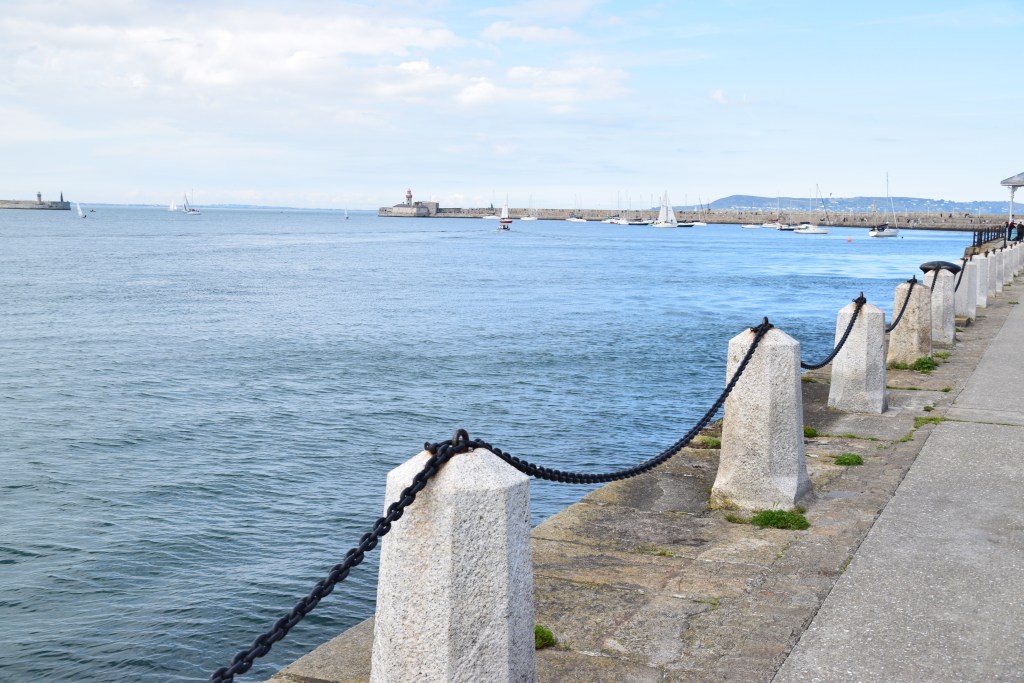
The Victorian Bandstand and the Sun Shelter on the level above it were erected in the 1890’s.
Just look at that craftsmanship!


This part of the pier suffered huge damage during Storm Emma in 2018. The Sun Shelter was dismantled to allow for repairs and is yet to be restored…

I love the original exposed edges……

…..although there are more and more health and safety measures being introduced all the time!

Not much biting today!
In February 1861, two ships – Industry and Neptune – tried to seek shelter during a bad storm but were dashed against the rocks at back of this pier. John McNeill Boyd, captain of the Ajax, and his men went to the aid of the shipwrecked crews. Tragically they lost their lives when a massive wave swept them into the sea.



Samuel Beckett was born just a few miles from here. These lines are from his play Krapp’s Last Tape.
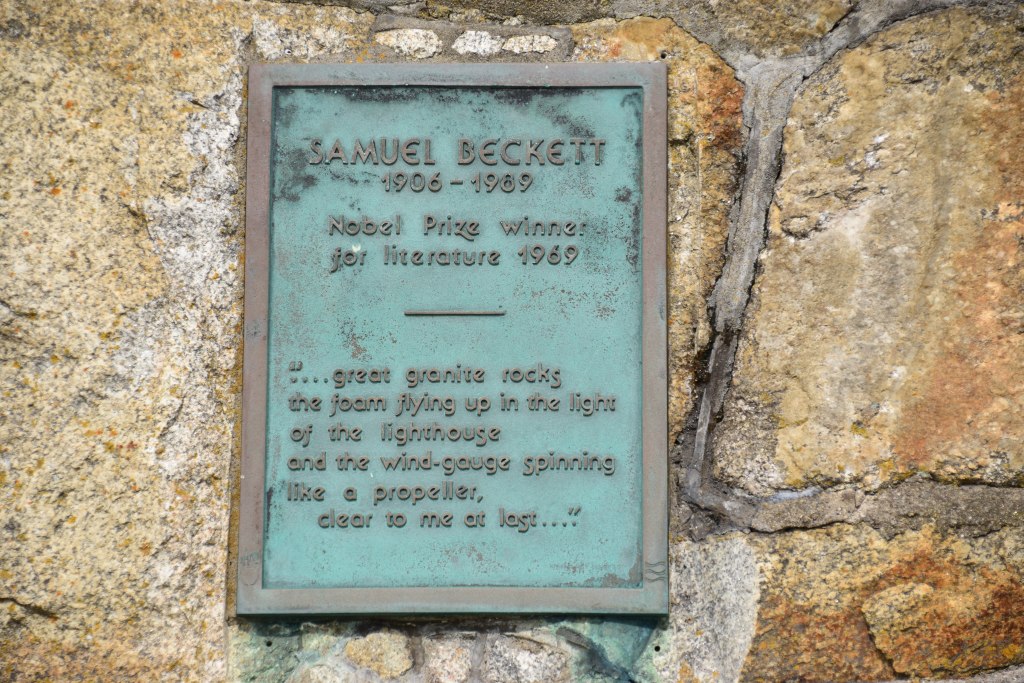
The Anemometer was built in 1852 to monitor wind and sea direction. The word Anemois above the door refers to the Greek gods of the 4 winds. It has been fully restored and is in working order.



A military Battery was built at the end of the pier in 1859 / 1860.
In his Official Railway handbook to Bray, Kingstown and the Coast (1860), G.R. Powell writes:
“Round the lighthouse has been lately built Kingstown Fort, a small but powerful defence should an enemy show himself within range. From its prominent position it commands the whole bay; it is completely manned, has many guns of large calibre, a powerful magazine, and a means of heating balls to a white heat. The walls round it are curved at the tops, so that any balls striking them, would glance away harmlessly.”
At one stage it housed an officer and 24 men. It never saw military action and was largely disused after the 19th century.

When you reach the end of the pier you have to touch the wall ….. no questions …. you just do it before turning back!

The battery is often open – you can go in and have a look around….. It’s well labelled with plenty of signs explaining the battery features and some history.
From the bell, there are great views of the West Pier, the bay and even a ferry from Dublin port sneaking past us!
Back on the pier, most strollers choose to return on the opposite level to the one they walked out on… The upper level is a bit more exposed but still gorgeous….

There are access points to the back of the walkway….


We’ll be heading over there once we’re off the pier…

You can still get a sense of how splendid the promenade must have been….

Back inside the harbour, you might catch sight of the Bay cruise ship which offers trips between Dun Laoghaire / city centre (75mins) and Dun Laoghaire / Howth (75mins). The 11.00am sailing from city centre to DL would be a perfect start to your day…or.. you could visit DL early, get the 12.30 sailing to Howth harbour and arrive at 13.45 with perfect lunch timing!
My favourite structure on the pier…..

That’s where we’re heading on our next walk (#5)!
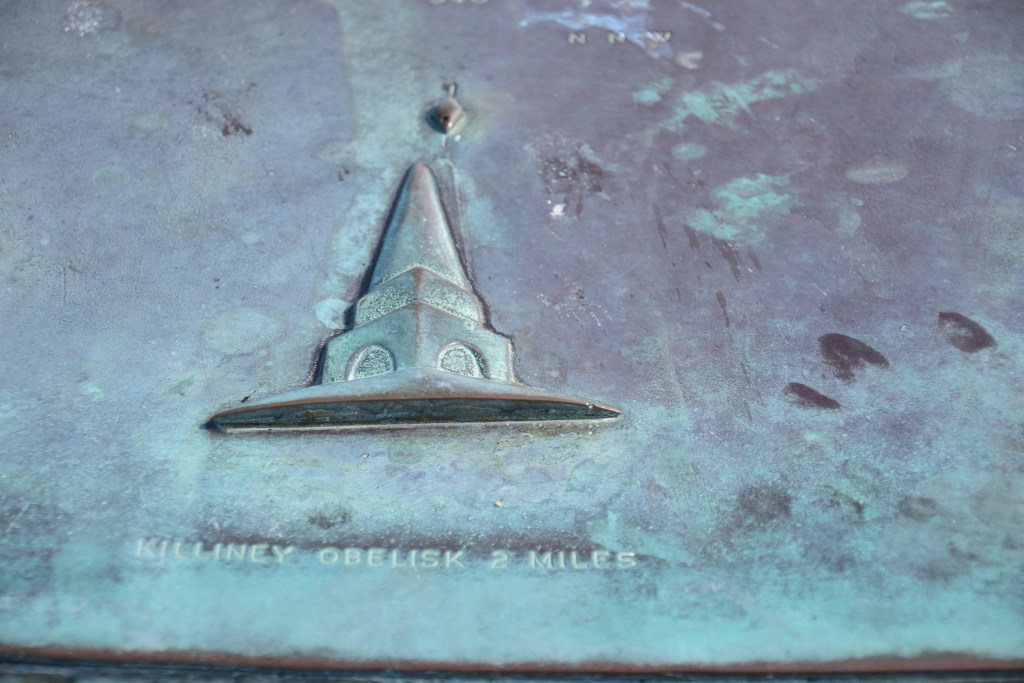

It’s a rare thing indeed to see the cannon not covered with clambering kids!
Nearly 3,000 of these Russian guns were captured during the Crimean War. When the war ended, it was agreed in the Treaty of Paris that each victor would receive some of the guns as trophies of war. According to the Kingstown Town Commissioners minutes of July 17, 1857, 16 pounds was raised from the townships rates for the purchase of one ‘Russian gun’ from the Secretary for War (some 20 Irish towns are believed to have applied for, and taken delivery of, a Russian gun for display purposes).

A few controversies before we leave the pier…..
Just beyond the pier is the site of Dun laoghaire Baths…
The Royal Victorian Baths were built in 1843 and what a choice was available to those who could afford the privilege – sea or fresh water, cold, hot or medical! They were renovated and extended around the turn of the century and again in the 1930’s.
The following quote is from the 1936 publication, Dun Laoghaire: The history, scenery and development of the district, prepared in connection with the Town Planning Survey, by M. Robertson:
‘Dun Laoghaire Baths, perfectly situated on the centre of the sea front, contain three pools; the principal pool being 146 feet by 30 feet, the children’s pool being 90 feet by 50 feet and a baby’s pool of elliptical shape 31 feet by 28 feet. There are 43 men’s boxes, 127 ladies’ boxes, a tearoom, lounge, laundry and offices. Provision for medical baths include hot water, shower, slipper, needle, seaweed, sulphur, alkaline and Russian (steam) baths. New baths are to be provided in place of the above at Dun Laoghaire at a cost of some £65,000. These will include a large swimming pool 300 yards by 100 yards, sun bathing benches, hot and cold medicinal and ultra violet baths, a large palm lounge for use as for a café, concerts and dances. It is also proposed subsequently to add warm salt water baths for winter use.’
Does that sound wonderful or what!
After more than 150 years, the Baths closed in 1997, becoming more and more of an eyesore with every successive year since. There has been much fun and games among planners, developers, conservationists, preservationists, residents, retailers, tourist boards, local politicians and media channels – you can imagine the craic!
Finally, we’ve white smoke and the site is now under redevelopment. The old saltwater pools are being filled in and the plans include artists’ studios, cafes, galleries, a park and walkways. A new jetty will provide access to the water for swimmers and a landing point for kayaks and canoes.

And this my friends, is the new library – a blot on the landscape or a work of genius????

Well you certainly can’t miss it can you! The 4 storey LexIcon has been criticised for its scale – its massive façade dominating the seafront to say the least! The architects’ brief was to create something which would link the harbour with the town. Regularly referred to as a ‘monstrosity’ and its funnel chimneys being likened to a Stegosaurus’ spiny back, I’m still always taken aback by the view from the pier. But I’m the first to admit that the it’s stunning inside and it’s a fabulous public space – and I’m proud holder of a LexIcon library card!

Time for fish ‘n’ chips before we move on….

While you’re waiting for your fish to be freshly cooked, wander a few feet and have a look at this!

This is an Analemmatic Sundial – but you already knew that didn’t you!!
Here’s your lesson of the day…..!
The Analemmatic or human sundial differs from ordinary sundials in three ways:
– It is elliptic in shape, rather than circular.
– It has hour points, as distinct from hour lines, to indicate the time of day.
-A gnomon is an object that, by the position or length of its shadow, serves as an indicator especially of the hour of the day: e.g. the pin of a sundial (that’s one for the crossword or table quiz!!) – This sundial does not have a gnomon. Instead, we ourselves stand on a specific spot and cast the shadow.

(Sundial with gnomon – just to clarify!)
Here we go with the perfect model (thanks Tom!)
- Stand with your feet on either side of the centre line with your heels on the approximate time of the month.

2. Note the time by the direction of your shadow.

3. If you need to extend your shadow, stretch your arms above your head.

4. Add or subtract the minutes indicated on the Equation of Time Graph.

5. Add 25 minutes for the time difference between Dun Laoghaire and Greenwich.
6. Spot on! It was 1.20pm on March 8th!
By the time you’ve it worked out, your lunch is ready! (Of course if there’s no sun you can spend your time watching the seagulls)!
Bon Appetit!

I suppose you’re wondering by now how many steps you’ve clocked.

If you add in the distance between the piers – 1.249km to be precise – that just over 8km or 5 miles …..
We’re turning left at the top of the pier..
….. passing the old baths on our left…

….and heading into the park. The beautiful Peoples’ Park was opened in 1890 on the site of one of the granite quarries used in the construction of the harbour . The wrought iron railings, bandstand, fountains, gardens and tea room have all retained their Victorian elegance.
There’s a great Farmers’ Market here on Sundays…..
There was another granite quarry in nearby Dalkey. ‘The Metals’ (an old term for an iron railway) was built in 1816. It was laid out as a truck railroad, paved with iron rails. Wagons were pulled along the rails by horses. Up to 250 horses and the same number of drivers were employed to transport the stone along the 3.5km route. Each horse made one journey per day, pulling up to 8 ton of granite.
The route still survives today as a footpath and cycle path.
There are 2 things you have to do when you visit Dun Laoghaire:
You have to touch the end wall on the East Pier
and
You have to buy a Teddy’s 99!

Call me biased if you must but this is absolutely the best ice cream in Ireland.

A ‘99‘ is whipped ice cream in a wafer cone with a Cadbury’s Flake inserted. Absolutely YUM!

The best way – no – the only way – to eat a 99 is to keep pushing down the chocolate as far as it will go….. so your last few bites are ice cream, wafer and chocolate….. divine!


Warning – apparently there is a global shortage of Cadbury’s Flake bars which means there may be a problem actually getting 99’s this summer!!! (Seriously – it’s true!)
We’re moving away from the piers and Baths and following the promenade along a lovely stretch of water. This is Scotman’s Bay.






There’s a lovely sandy cove here in the corner – called…. Sandycove!.

You would not believe how many bodies this little patch of sand can accommodate on a sunny summer’s day!
This is the famous Forty Foot – a favourite with Dubliners for over 250 years. Named after the Fortieth Foot Regiment which was stationed at the Battery at the end of the pier, it was a ‘gentlemen only’ bathing place until invaded by female activists during the 1970’s liberation movement.
It has many worshippers who wouldn’t miss their daily swim for anything. Its easy to pick out the novices – bracing themselves for the freezing plunge. There’s no easy way – either jumping right in or easing yourself, millimetre by millimetre – this is seriously cold water (and before you ask – I ventured in as far as my knees once!)

This Martello tower, built in 1804 to withstand any Napoleonic invasion, is now better known as the James Joyce Tower. Joyce spent a mere six nights here but his brief stay inspired the introduction of his great novel Ulysses. Nowadays, a dedicated museum (free admission) celebrates his life and works. The living area is as he described it in his book and you can go up on to the roof for great views.


We’ve ‘done’ the seafront. We’ve added about 1.5km to our walk and need to allow about 2km back to the DART Station. That’s about 11.5 km /7 miles in total – But you’ve had your fish ‘n’ chips and your ‘99‘ and probably even slipped in somewhere for a few pints when I wasn’t looking! So you’re not a bit tired!
There are a few worthy mentionables that you might like to check out while you’re here….
The main street – George’s Street – is a bit sad nowadays but its lovely to see a few of the old timers hanging on…(although I can tell you that when I was growing up the Miami certainly did not sell kebabs and milkshakes! Such exotic fare hadn’t even been invented!
The old Fire Station and Library are now obsolete – weren’t they grand….
…. although the 1890’s bank is still going strong….
The 19th-century Gothic St. Michael’s church was mostly destroyed by a fire in 1965 – just the tower and Spire remained. The ‘new’ St. Michael’s opened in 1973 – go inside and look at the stained glass windows.

The Mariners’ Church was built in 1837 as a place of worship for sailors arriving into Kingstown. Today, it houses the National Maritime Museum of Ireland.
Here you will find a Titanic exhibition, displays on Irish coastal wildlife and other marine related topics, a maritime art gallery and a recreated radio room.
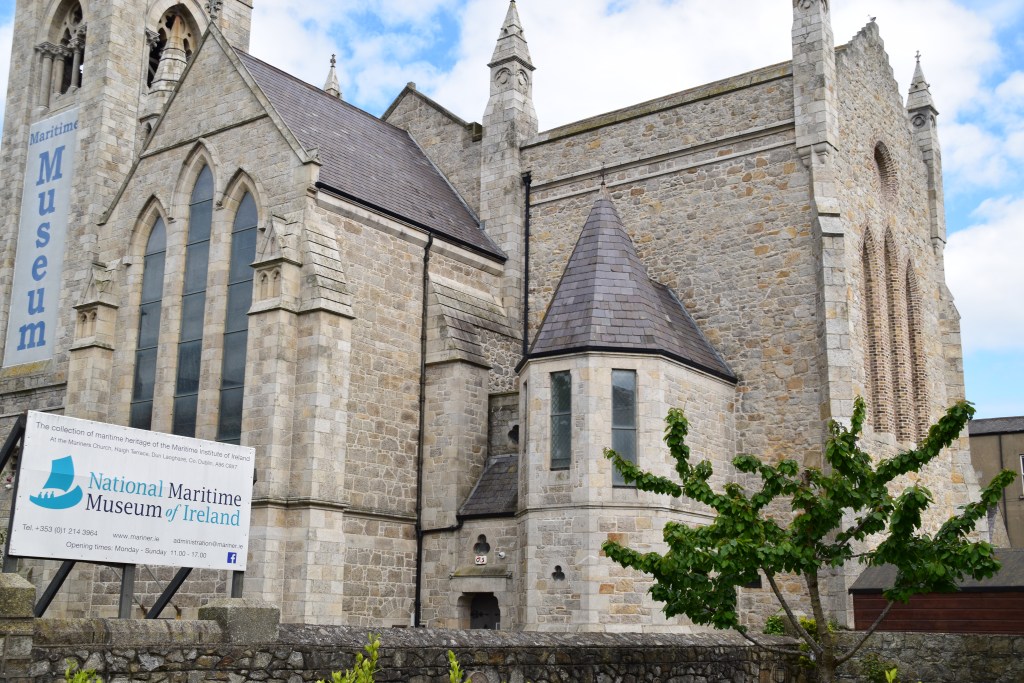
The hotel that is now the Royal Marine first opened its doors in 1865. It has since hosted royalty, heads of state and celebrities. – when Queen Victoria visited Ireland via Dun Laoghaire, she enjoyed a 16 course breakfast here!!

This Triple Cross was designed in plaster in the 1920’s as a memorial to those who died in World War I. It symbolises 3 aspects of Christ’s life – Desolation, Consolation and Triumph. This bronze version has stood overlooking the harbour since 1978.

There’s a nice open space next to the LexIcon which lends itself perfectly to outdoor displays and exhibitions….


I love this one from the Press Photographer of the Year Awards – Lockdown Man (Kenneth O’Halloran)


I hope you’ve enjoyed your time in Dun Laoghaire….
Where we’ve been:
#1 – Howth

#2 – Dollymount

#3 Sandymount

Where we’re going to:
For our last walk, we’ll be heading to nearby Dalkey and Killiney Hill….


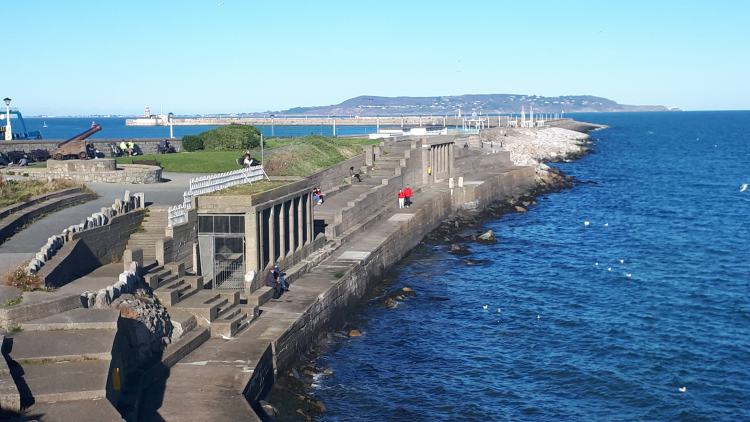



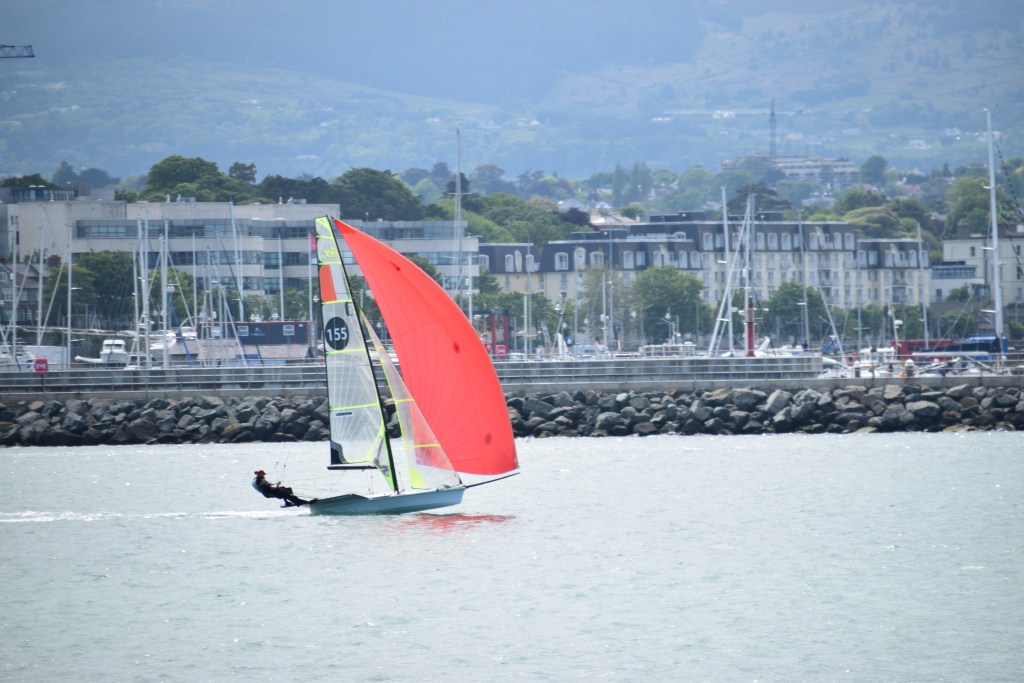












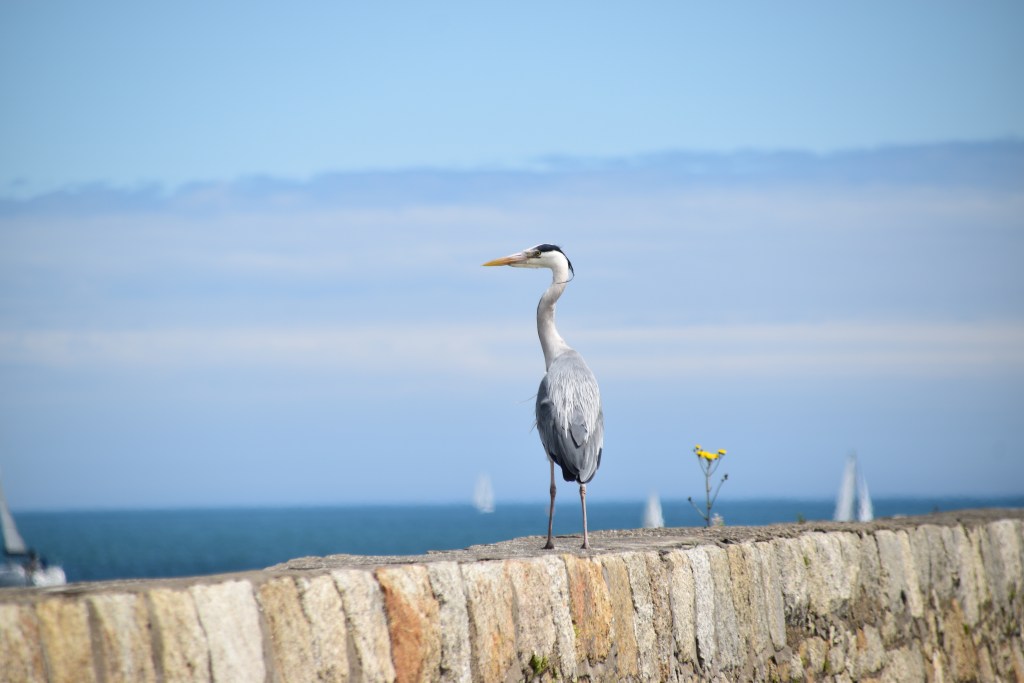






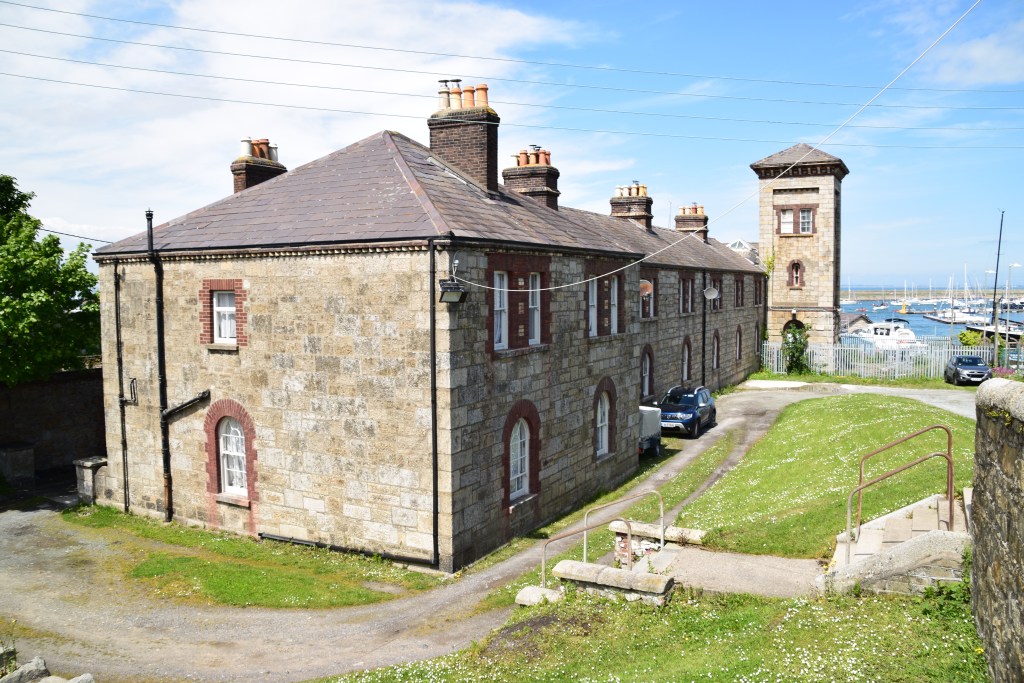








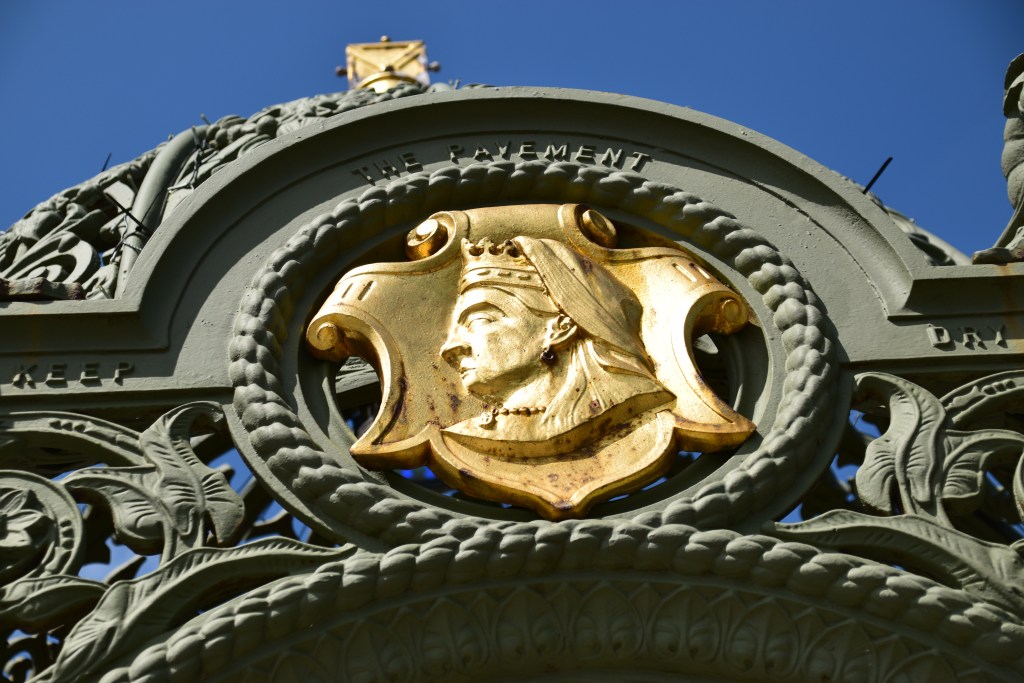

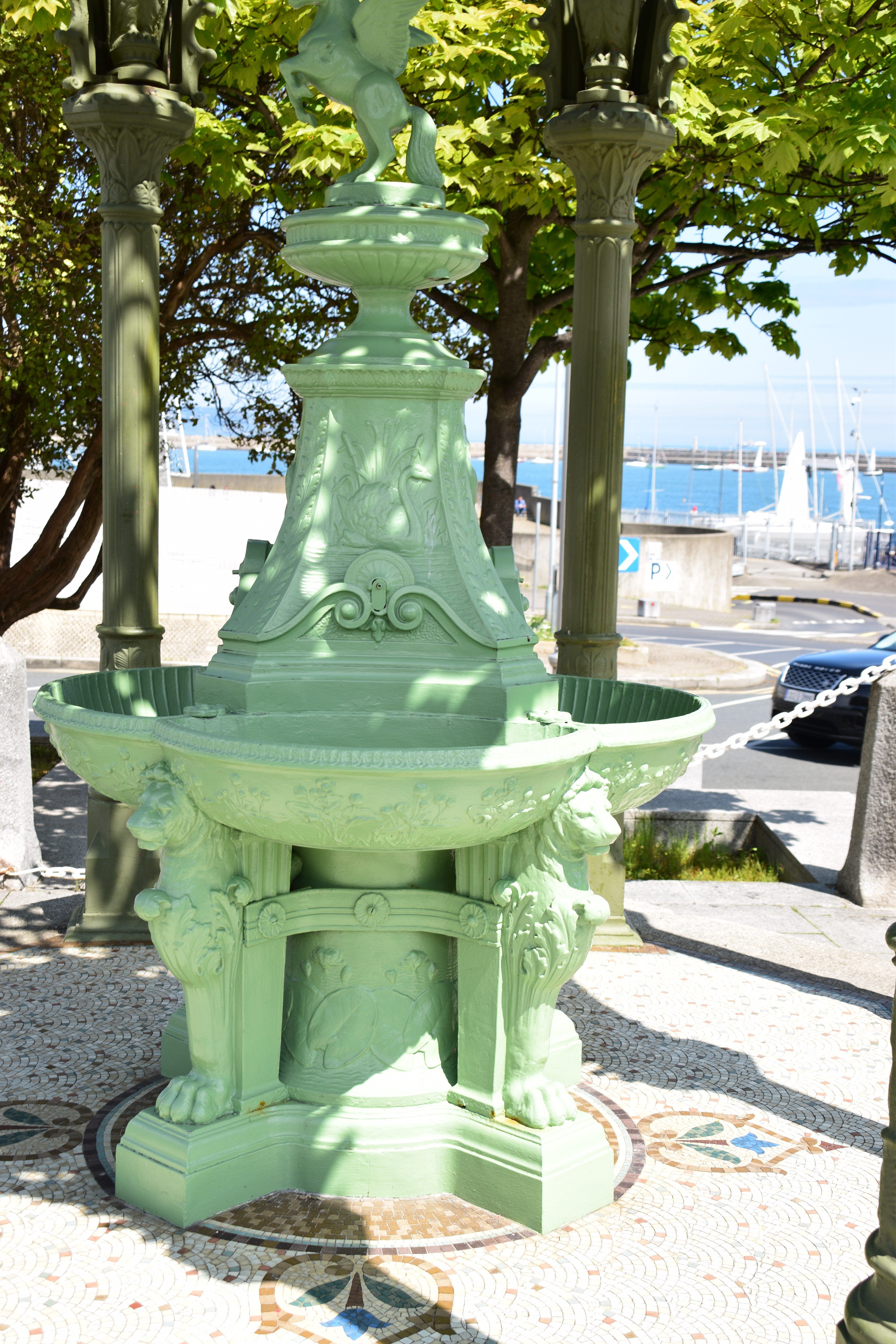





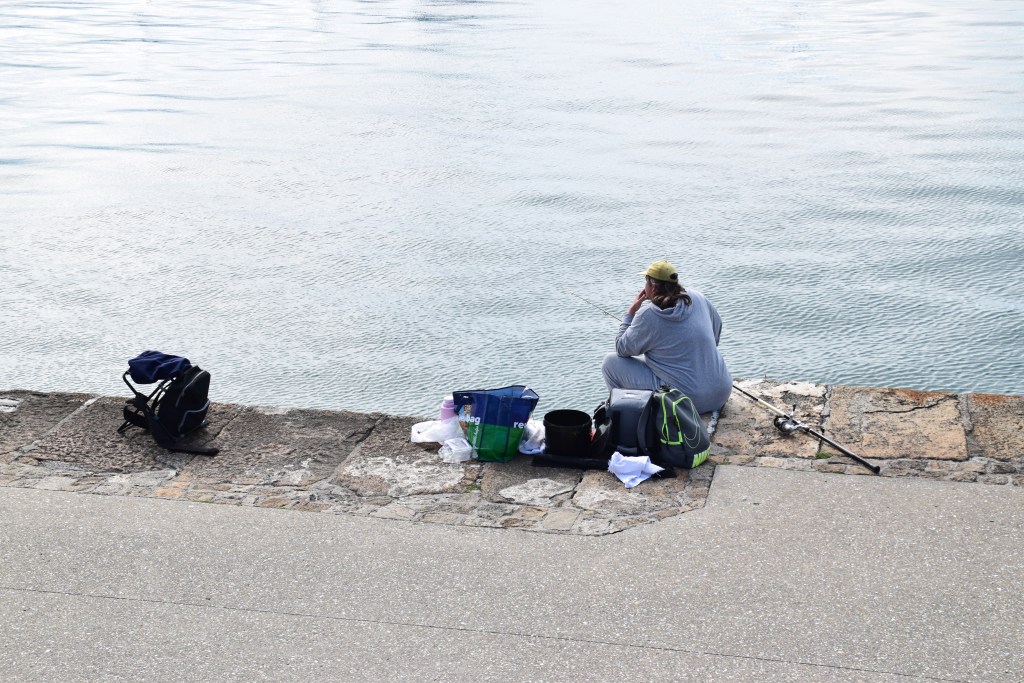

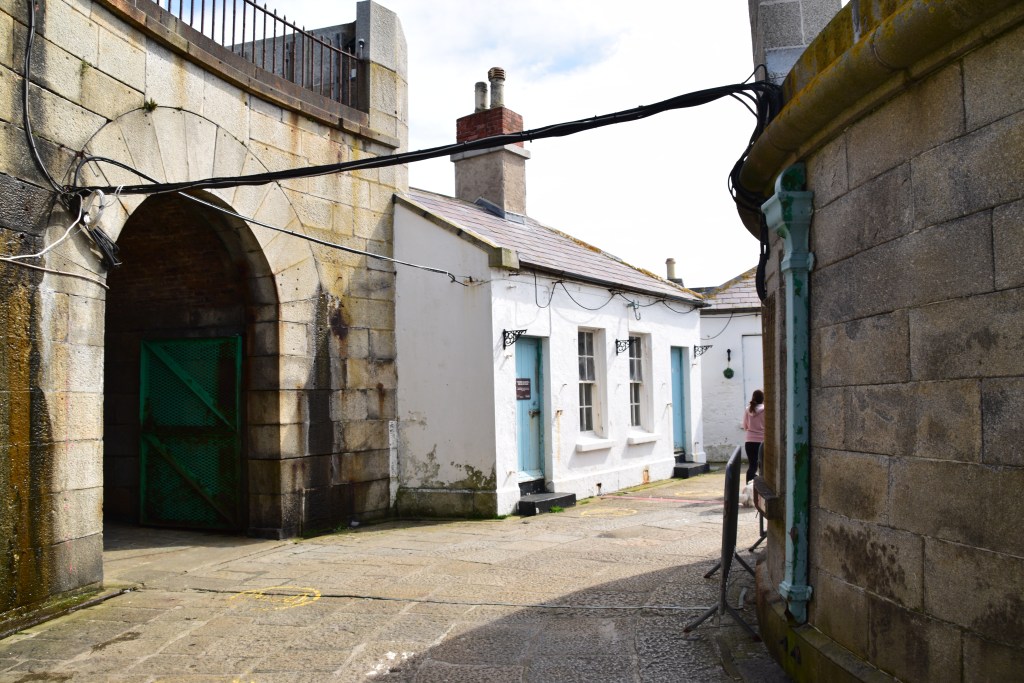
















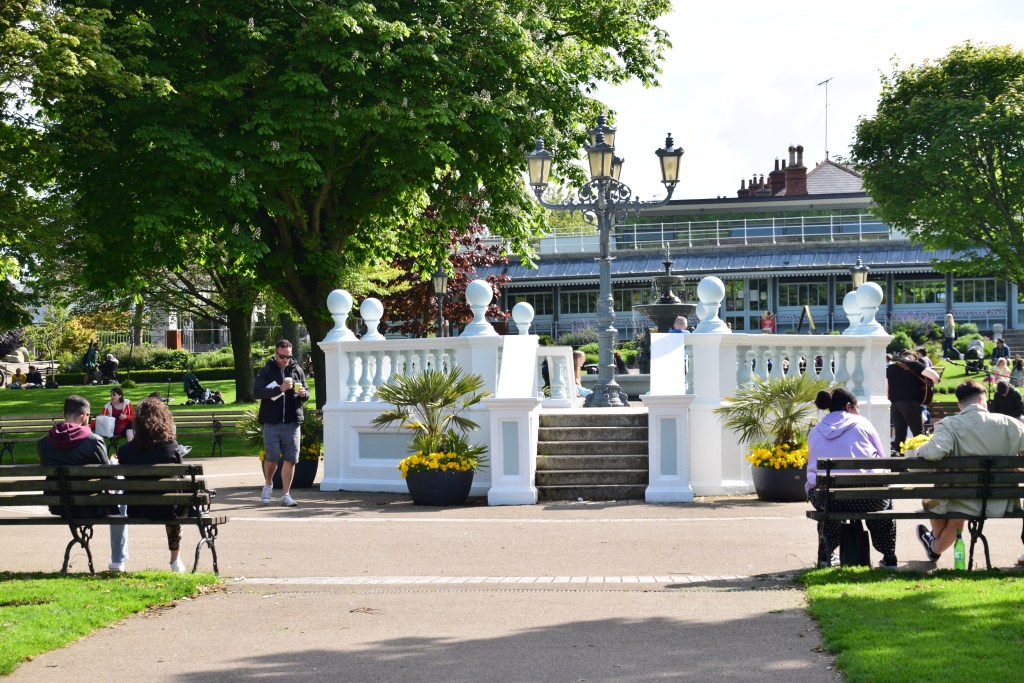
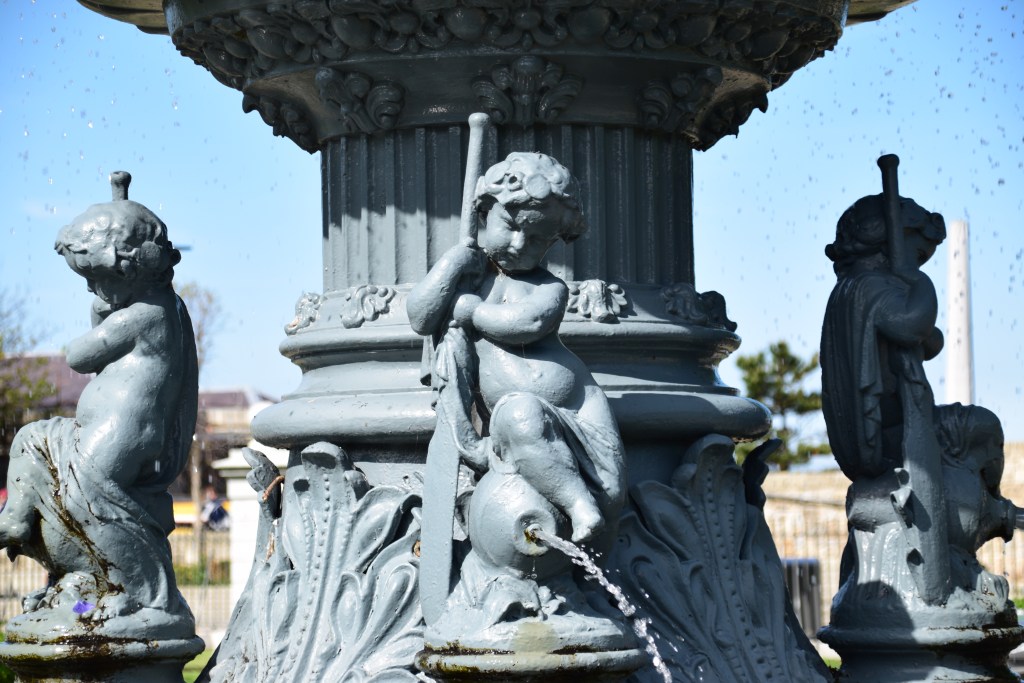










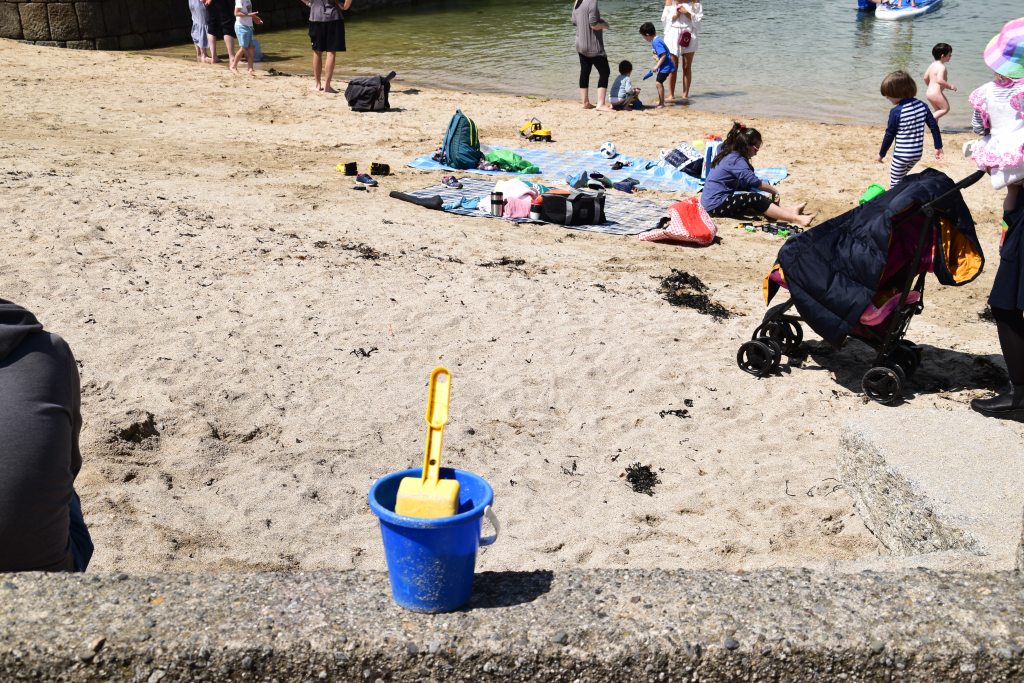









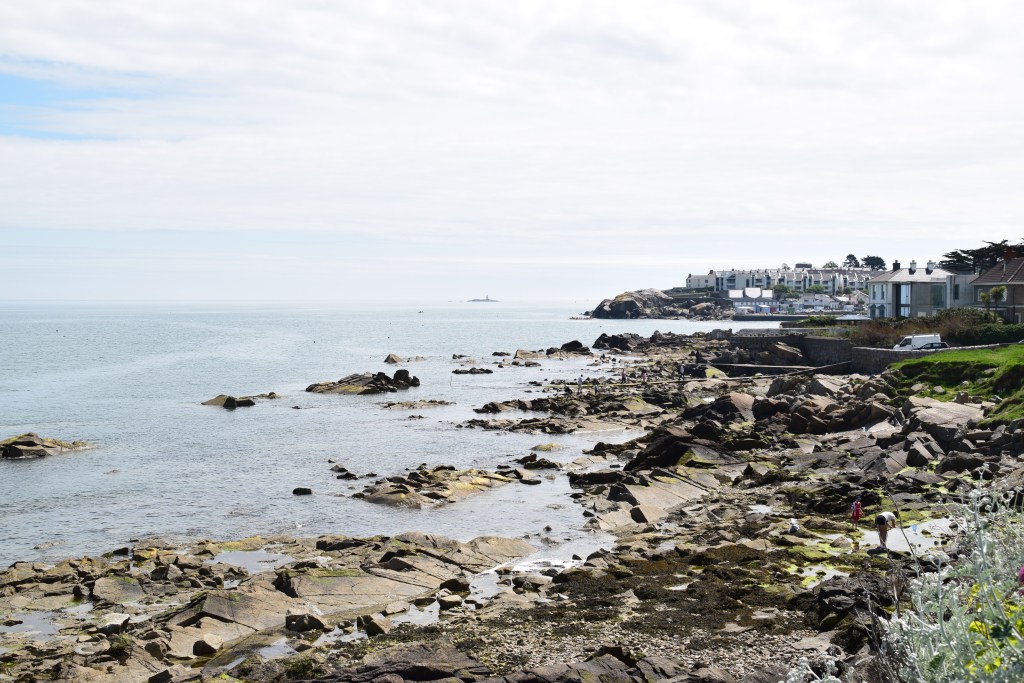





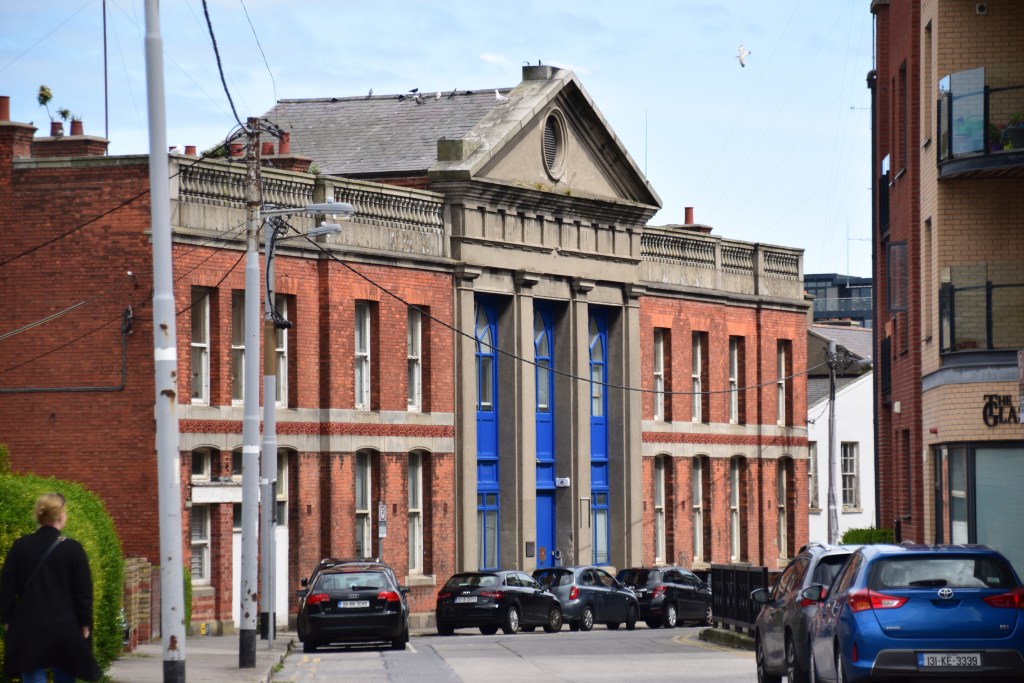

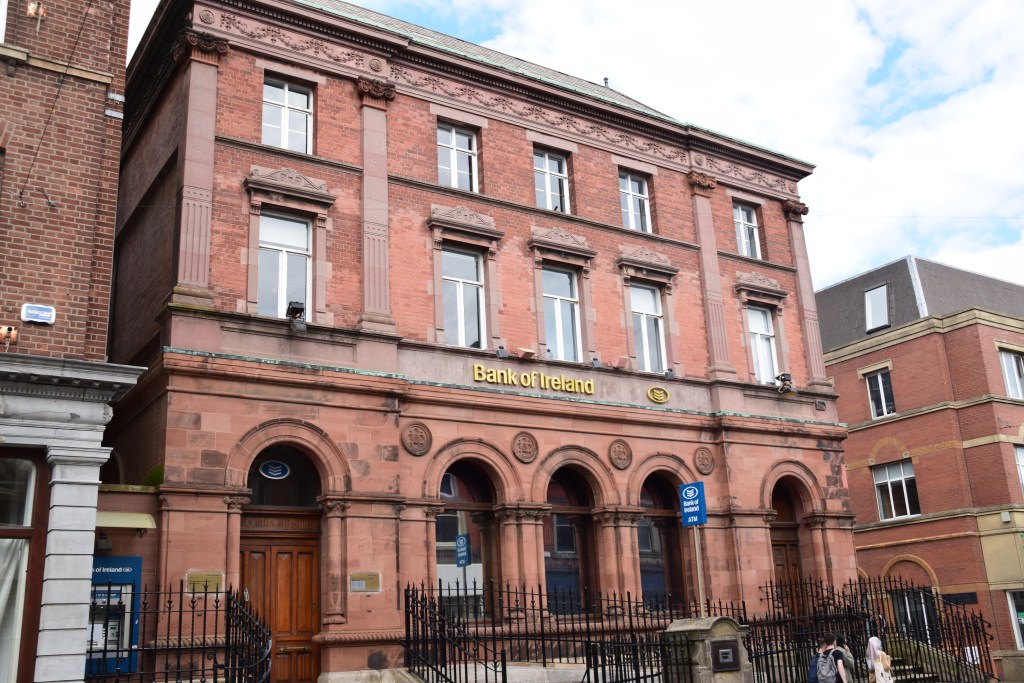






Wow! That’s a great site to see.
It really is a lovely place ….. I’m lucky to live so close….
Wow, thanks for the detailed description of the human sun-dial! I learned something new today 🙂
I worked it all out for you so you’d never have to…😅 😂
Wonderful site
Thank you – glad you enjoyed…..
Most welcome
Fascinating, I agree with Thackery’s assessment of that memorial. The one to Victoria’s visit is a lot nicer. The loss of 400 lives from those two ships must have been a terrible event!
The Victoria Fountain is lovely – fabulous detail…. the other one is something you’d just walk past! Even today, such a rescue would be so difficult – imagine back then…
Oh wow, so much to see here – thank you for this lovely walk around Dun Laoghaire 🙂 If I have to pick out some highlights (beyond the general sea views) they would be the restored drinking fountain, the human sundial (fascinating!), the lacy decoration on the bandstand, the cute coastguard cottages, the James Joyce Tower … I’m with Thackeray on that memorial and still trying to make my mind up about the Lexicon – it looks good from some angles but dreadful in your first shot, although the outside exhibition space is a great idea 🙂
I started off with the two piers and Joyce’s Tower in my head….. it’s amazing what pops up when you put a trail together – bits and pieces I’d walked past so many times over the years that I’d stopped actually seeing them –
I agree with all your highlights…. but I’ll personally be adding the ice cream cone!!!
It’s a lovely place Marie, thanks for sharing so much of it with us 🙂
Glad you enjoyed it Hannah… I actually loved putting it together….
Looks likea fabulous walk Marie with so many things to see and do. I love the sun dial and after 15 months away from the sea coast, would kill for some good fresh fish and chips. Thanks for taking us on this walk. Allan
The one thing that kept my sanity over the past year was my proximity to the sea…. Dun Laoghaire was just outside our 5km (although we did sneak the odd walk on the East pier and get our fish ‘n’ chips!) but we can walk to the nearest beach in about 10 mins max. We didn’t go that direction every day but certainly did it a few times pre week and it was lovely to have the option. The great thing now that we’ve opened up again, is that everyone in the country is less than 2 hours drive from the coast – sometimes, small is good!!!
Such a cool place! You’d definitely have to hurry me along, I’d be taking pictures of everything 😍
And it’s a selfie heaven!!! No visitors around at the moment of course but usually we’re dodging posers every few metres!😅 😂.
Hope all is well with you – I’m sure you’re still on a high after your wedding and trip…. XXXXMarie
I do love a good selfie! That’s how I felt visiting the status of Liberty last September, felt like we had her to ourselves!
Ah yes I have lots of blog posts and thank you cards to write 😅
Looking forward to seeing and reading everything. XXXXMarie
I love Dún Laoghaire and going for strolls on the East Pier, and locally caught fish and chips. It was one of my favourite suburban coastal towns (do I actually say this about every place you write about, Marie?) but it was such a perfect place to breathe in the sea air and watch the world go by while indulging in Teddy’s Ice Cream. Thanks for sharing, now I am having wonderful flashbacks about all our previous visits 🙂 I hope you had a lovely weekend, the sun was shining in Sligo, and we had a blast exploring nearby woodlands 🙂 Aiva xxx
I think people generally like Dun Laoghaire because its such an easy outing – as much walking as you wish, but it’s all on the level. Then there’s the park and the market… and a few museums should the mood hit you for a bit of culture. And then there’s the DART for easy access… It’s at its best these days with the good weather….
Thanks for taking us along on this great walk. I have to admit something – I learned how to pronounce Laoghaire from listening to Outlander on CD, after I’d read the books and before the tv show!!! Maggie
Well that’s a first!!! Never actually read or watched Outlander… worth watching????
I’m not sure if the show is good without reading the books, but it does a great job of retelling the story from the books and I loved the books.
I must have a look at them ….I need a summer reading list…..
I never managed to see all that in Dun Laoghaire, which indeed requires a little instruction to be pronounced correctly. I mainly remember coming there for the international festivals during the summer, I still have some CDs bought in the enthusiasm of the moment.
We all have a stash of such CDs haven’t we – bought in the heat of the excitement and afterglow of a live event!!!😖😅 😂
I felt I was walking the route with you Marie. Will definitely have to pay more attention on my next visit and walk both piers!! 😊
No bother to you after all your Covid walking and swimming!!!
Who’d have though that Dun Laoghaire had so much to offer. You really have pushed the boat out with this lot – and you got blue skies as well! Now that’s a wonder. My legs are now aching at all the walking and my neck has a crick in it from looking up at the buildings I’d never bothered with before. You shame me. When will I have a chance to get back there and see them? Ah, when oh when! I do miss my home visits and my family, but Covid makes martyrs of us all, as my mother would say if she were still alive.
I can’t believe the amount of stuff I’ve found the whole way around the bay!! I’d no idea until I started REALLY looking for these blog posts…
A school pal got in touch to say she was coming home from Holland in August to see family… I must admit I was almost taken aback when I read it… She’s the first I know who’s travelling here – apart from younger generations who come for longer stays and work from home. Its wonderful to hear of people on the move again…. I’m not entertaining any such thoughts yet – although I’d love to visit family in London. But we’re heading west to Mayo the week after next so that’s a first step for us…
Well Marie, you have done it again.. such a wonderful account of your dear Dun Laoighaire. Wasn’t your Dad stationed there?
I never heard of the ‘Pier of Tears’ and found the account very poignant. My Dad’s Mom died when he was only two. His older brother, Bernard, became very important to him.
As a child, my Dad would drive us to Dun Laoighaire to walk the pier. When we reached the end of the east Pier, he would encourage us to start walking back while he stayed staring out to the horizon. Years later when I asked what significance this had. He told a sad tale. In 1949 his brother Bernard, told him that he was taking the mail train to Dun Laoighaire from Westland Row and heading to the UK and further on to the US for work. Dad hopped on a bus and went out after him. He didn’t get to see him but ran to the end of the pier to watch the mail boat leave for the UK.
My Dad passed in 1998 never having met his brother again! So sad……….. thankfully we are well connected to his six daughetrs and their families in the US.
In 2021, when my brother got married here in Ireland, my US cousins came to town. They hosted a family dinner. We picked ‘Realt na Mara’ the restaurant that was the mail train station house…. very significant to the emigrant story.
Thanks again Marie……. wondrful writing.
That’s some story Teresa – imagine never seeing him again. It’s wonderful to have that relationship with your cousins isn’t it….
I’d emigration on both sides – 2 of dad’s sisters and mum’s 3 brothers all went to England. But at least they managed to get home on occasion – the US was so far away back then…..
Because we lived so close to the ‘mailboat’ I remember people from both my parent’s townlands staying with us the night before the sailing or, if arriving home, then their first night before heading back to Donegal the following day. That would have been the 1960’s…..
Needless to say, Dun Laoghaire pier is fairly busy on these gorgeous evenings….
XXXMarie
Ah yes. It’s a destination point … I remember that Summer in Dublin “ 🎵🎶🎼
🎵 🎶 …. so I jumped on a bus to dun laoire, stoppin off to pick up my guitar…..🎵 🎶
Really, really love that song!!!!
Epic post Marie. That must be the most comprehensive guide to the Dun Laoghaire harbour area that exists anywhere. I never spent much time there but ran through on a number of occasions. Had a gawp at the Forty Foot and was disappointed to find Joyce’s Tower closed, in September. The history is endless.
Thanks as always for your support Roy.
The tower was going through a tough time when you were here… it was closed more then open…. Then in 2012 a group of volunteers got together – Friends of Joyce Tower Society and they keep it manned now 365 days per year!!
We took one of those Hop on Hop Off tours of Dublin and for some reason, yet for many of the sights described here, we did not see. I find Dublin to be a writer’s paradise for sure.
I reckon that bus route is just in and around the city centre….I doubt it goes along the bay at all… maybe Grand Canal Dock at best.
There’s a great literary heritage here for sure…Dublin has certainly produced some great writers….
Such an interesting place to visit and so pretty too
Its lovely – very popular even just for a drink in one of the pubs….